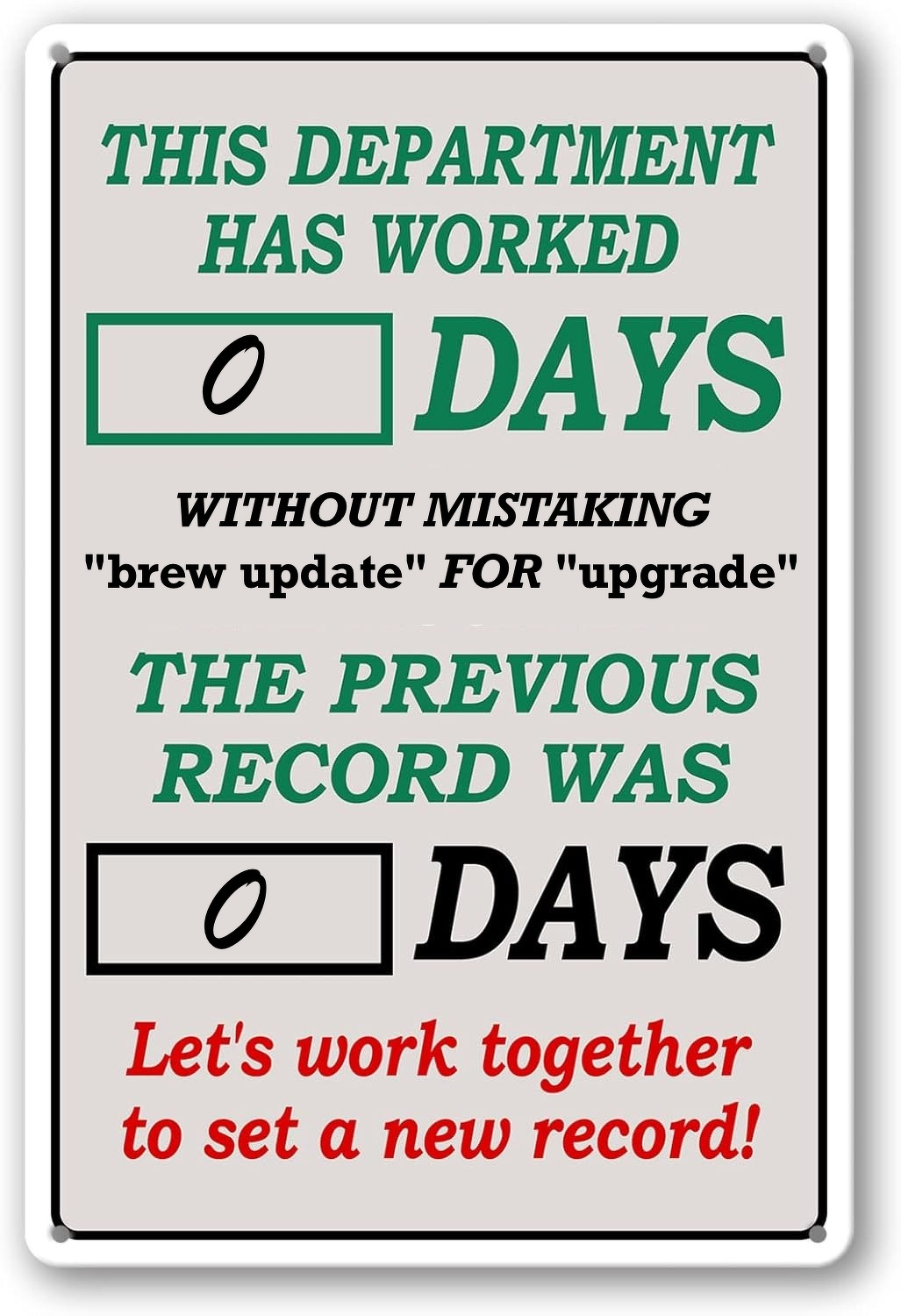-
There’s real weight in deciding whether a change deserves a bump in the major number of a version tag. “Sure my change is technically backwards incompatible, but who am I to choose whether to move to version 2 of a (private) package? I should just play it safe and bump the minor version to 19.”
-
Listening to Ben Thompson this morning about autonomous package delivery and wondered: would Transformers be useful here? It’s a delivery van on the road, then transforms into a humanoid to place the package at the house. Transforms back into a van to go to the next house. Might be a winner here. 😛
-
🛠️ komodo: a tool to build and deploy software on many servers
Looks interesting. Putting this on my “if I get bored/frustrated with Coolify” list.
-
Pro-tip for anyone using Stripe: don’t use colons in your metadata keys. It’s not that they’re not allowed, but there’s no way to escape that colon in a Radar expression. Best to stick with alphanumerics and the underscore, as if those keys were C idents.
-
Using AI for your support chat is good and all but have you considered that those using it can’t really go to their boss and say “this is what the AI told me?”
-
Took down my PeerTube instance. I wasn’t uploading videos often enough to justify running it, and given the watch counts from most of the videos there, I doubt anyone will miss them. The goal is to use Micro.blog for hosting videos if I can. The rest will now go to YouTube.
-
📘 Devlog
Blogging Tools - Chunking File Uploader
An attempt to improve upload speeds by chunking large files and uploading them via multiple HTTP requests dispatched concurrently. Spoiler: it didn’t help. Continue reading →
-
🔗 Andre Franca: Small Web, Big Voice
Really enjoyed this post from Andre. I agree that some may view having a blog in 2025 as being irrational. I guess the belief is that it’s harder to get the exposure or virality with a blog than it is by simply posting on the socials (as if reach or cash is the only reason to do anything online). I’m not sure I agree, but even if that were true, it depends if that’s something you want. If it’s just to have a place that you can call your own, then I’d argue having a blog, even in 2025, makes total rational sense.
Via: Kev Quirk
-
One thing about working at the Bureau of Meteorology is that everyone will ask you about the weather, regardless of what your role is. It happened to me, and I’m no meteorologist. Happens to the minister holding the Environment and Water portfolo. There were stories of ministers being given the forecast before official social occasions, should someone like the Prime Minister asked them about the weather.
-
Fruit of the hoop pine.

-
🔗 Nikita Prokopov: Needy Programs
A thought provoking post.
And even if you give up and create [an account for a program that requires one], they will never leave you alone: they’ll ask for 2FA, then for password rotation, then will log you out for no good reason. You’ll never see the end of it either way.
The topic of passkeys came up at work yesterday. A colleague made the suggestion that passkeys should be mandated across everything, with very few exceptions. The reasons he gave are decent, of course: protecting accounts from unwanted intrusions. Yet I didn’t really agree with him. I know for myself I find them a little annoying, and knowing a few people who aren’t as steeped in technology as I are, I do wonder how well they would receive such a mandate. Probably in a similar way to Nikita here.
And it’s a tricky balancing act, because they are more secure than passwords. And so is asking for 2FA, and password rotations, and logging you out after a while (that’s to avoid a session token from leaking and falls into the wrong hands, and being usable for ever). And sometimes they’re necessary: there are a lot of arseholes out there. But they are annoying, and when it comes to authentication, it’s usually the default position of any developer to say “lock down all the things,” without considering tradeoffs.
So yeah, I don’t have a good answer here. Not even sure there is one.
Via: Manton Reece
-
Using KDiff 3 is like using an old hammer you have lying on the workbench in a joinery. It been there for years, and it’s covered in sawdust and varnish. It leaves your hand sticky after you use it; handling it is not a pleasant experience. But it’s there; and when you need it, it frickin’ works.
-
It’s a shame that there’s no market for a low cost, standalone, well designed visual diffing tool. The candidates seem to be either free ones with a mediocre user experience, or anything built into the IDEs. Everything else is quite expensive, upwards of $40.00. Nothing meets in the middle.
-
I didn’t expect to like today’s Stratechey interview, what with “turnarounds” sounding somewhat corporatey in the abstract. Yet, I found it really enjoyable. Matthew Bromberg gave some fascinating stories of his career.
-
New album discovery: Immunity, by Jon Hopkins. 🎵

-
🔗 Android Developers Blog: Android developer verification
Under the heading “Empowering experienced users” (emphasis original):
Based on this feedback and our ongoing conversations with the community, we are building a new advanced flow that allows experienced users to accept the risks of installing software that isn’t verified.
In other words: side loading should be possible without verification. This is good.
Via: Hacker News
-
I could be the only Melburnian I know that enjoyed travelling on the Hitachi trains on hot days. To hear the deafening journey they take through the loop with the windows down was always a thrill.
-
“Get out more” goal for November achieved. ✅
Boardgames at the Melbourne Central Lion Hotel. Bought along Wingspan tonight. Was a huge hit: better than I hoped. Played a full game with 3 other players. 👍

-
I will admit, I was a hater of Stripe’s new developer tools that slid up from the bottom when I first used them. But I’ve grown to really like them. They have the one thing I’ve been wishing from Stripe from the beginning, which is showing how the entity you’re looking at looks from the API.
-
On TOON And Human Readable Data Formats
My thoughts on defining human readable formats that are difficult to modify by hand, and taking it out on TOON which is geared towards LLMs. Continue reading →
-
Did not expect to be back here again, riding the Comengs like it’s going out of style. Such is this year’s theme, unfortunately.


-
TIL that
⎋is the symbol for the Escape key. HT @jason@social.lol -
It happened again today.

-
Slow strobes.
-
This clip made me think. Not because of anything to do with Apple, Google, and their dealings. Rather, it made me wonder if this is applicable to things like how one spends their time and effort at self improvement. Focusing more on what you know your good at, for example.